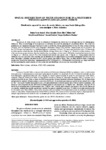Use este identificador para citar ou linkar para este item:
http://www.alice.cnptia.embrapa.br/alice/handle/doc/971734Registro completo de metadados
| Campo DC | Valor | Idioma |
|---|---|---|
| dc.contributor.author | AVANZI, J. C. | pt_BR |
| dc.contributor.author | SILVA, M. L. N. | pt_BR |
| dc.contributor.author | CURI, N. | pt_BR |
| dc.contributor.author | NORTON, L. D. | pt_BR |
| dc.contributor.author | BESKOW, S. | pt_BR |
| dc.contributor.author | MARTINS, S. G. | pt_BR |
| dc.date.accessioned | 2013-11-21T11:11:11Z | pt_BR |
| dc.date.available | 2013-11-21T11:11:11Z | pt_BR |
| dc.date.created | 2013-11-21 | pt_BR |
| dc.date.issued | 2013 | pt_BR |
| dc.identifier.citation | Ciência e Agrotecnologia, Lavras, v. 37, n. 5, p. 427-434, set./out. 2013. | pt_BR |
| dc.identifier.uri | http://www.alice.cnptia.embrapa.br/alice/handle/doc/971734 | pt_BR |
| dc.description | The process of water erosion occurs in watersheds throughout the world and it is strongly affected by anthropogenic influences. Thus, the knowledge of these processes is extremely necessary for planning of conservation efforts. This study was performed in an experimental forested watershed in order to predict the average potential annual soil loss by water erosion using the Universal Soil Loss Equation (USLE) and a Geographic Information System (GIS), and then compared with soil loss tolerance. All the USLE factors were generated in a distributed approach employing a GIS tool. The layers were multiplied in the GIS framework in order to predict soil erosion rates. Results showed that the average soil loss was 6.2 Mg ha-1 yr-1. Relative to soil loss tolerance, 83% of the area had an erosion rate lesser than the tolerable value. According to soil loss classes, 49% of the watershed had erosion less than 2.5 Mg ha-1 yr-1. However, about 8.7% of the watershed had erosion rates greater than 15 Mg ha-1 yr-1, being mainly related to Plinthosol soil class and roads, thus requiring special attention for the improvement of sustainable management practices for such areas. Eucalyptus cultivation was found to have soil loss greater than Atlantic Forest. Thus, an effort should be made to bring the erosion rates closer to the native forest. Implementation of the USLE model in a GIS framework was found to be a simple and useful tool for predicting the spatial variation of soil erosion risk and identifying critical areas for conservation efforts. | pt_BR |
| dc.language.iso | eng | eng |
| dc.rights | openAccess | eng |
| dc.subject | Mata Atlântica | pt_BR |
| dc.title | Spatial distribution of water erosion risk in a watershed with eucalyptus and atlantic forest. | pt_BR |
| dc.type | Artigo de periódico | pt_BR |
| dc.date.updated | 2013-11-21T11:11:11Z | pt_BR |
| dc.subject.thesagro | Eucalipto | pt_BR |
| dc.subject.thesagro | Erosão hídrica | pt_BR |
| dc.subject.thesagro | Solo | pt_BR |
| dc.subject.thesagro | Bacia hidrográfica | pt_BR |
| dc.subject.thesagro | Distribuição geográfica | pt_BR |
| riaa.ainfo.id | 971734 | pt_BR |
| riaa.ainfo.lastupdate | 2013-11-21 | pt_BR |
| dc.contributor.institution | JUNIOR CESAR AVANZI, CNPASA; MARX LEANDRO NAVES SILVA, UFLA; NILTON CURI, UFLA; LLOYD DARRELL NORTON, USDA; SAMUEL BESKOW, UFPELOTAS; SÉRGIO GUALBERTO MARTINS, UFSÃO JOÃO DEL REY. | pt_BR |
| Aparece nas coleções: | Artigo em periódico indexado (CNPASA)  | |
Arquivos associados a este item:
| Arquivo | Descrição | Tamanho | Formato | |
|---|---|---|---|---|
| avanzi.pdf | 576,63 kB | Adobe PDF |  Visualizar/Abrir |









